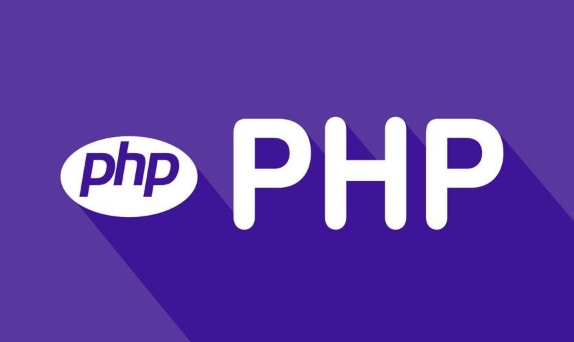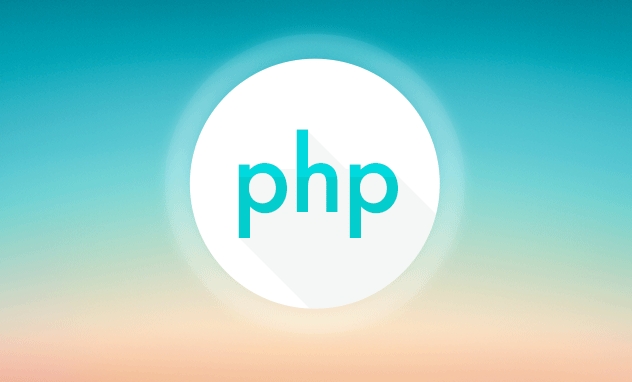How Can You Implement Caching in a PHP Application?
To effectively implement the cache of PHP applications, first enable OPcache to improve script execution efficiency; secondly, output cache for static pages; secondly, use Memcached or Redis to cache data; finally control browser cache through HTTP headers. 1. Enable OPcache and configure the memory and file count parameters. 2. Generate cache files for frequent access to the page and determine whether they need to be regenerated when requesting. 3. Store database results, API responses, etc. in Redis or Memcached, and set the key name policy and expiration time. 4. Set up HTTP headers such as Cache-Control and ETag to optimize the caching effect of APIs and static resources, reduce bandwidth usage and speed up loading.

Caching is one of the most effective ways to improve performance in a PHP application. It helps reduce database load, speeds up page loads, and improves user experience. If you're looking to implement caching in your PHP app, here's how to do it effectively.

1. Use Opcode Caching with OPcache
One of the simplest and most impactful caching methods is opcode caching. PHP scripts are compiled into opcode every time they're executed — unless you cache it.
Enable OPcache:

- Make sure
opcache.so(orphp_opcache.dllon Windows) is enabled in yourphp.ini. - Set
opcache.enable=1 - For production, enable
opcache.enable_cli=1if you run CLI scripts. - Adjust
opcache.memory_consumptionandopcache.max_accelerated_filesbased on your app size.
This doesn't require any changes to your code and give an immediate performance boost.
2. Cache Output or Full Pages for Frequently Accessed Content
If your site has pages that don't change often — like a homepage or a product listing — caching the full HTML output can save a lot of processing time.

How to do it:
- Create a cache file for each page (eg, using a unique key like the URL).
- Before generating the page, check if a cached version exists and is still fresh.
- If so, serve it directly without executing the full PHP logic.
- Otherwise, generate the page and save it to the cache.
$cacheFile = 'cache/' . md5($_SERVER['REQUEST_URI']);
if (file_exists($cacheFile) && (time() - 3600 < filemtime($cacheFile))) {
readfile($cacheFile);
exit();
}
// Generate page content normally
ob_start();
echo '<html>...your content...</html>';
file_put_contents($cacheFile, ob_get_contents());
ob_end_flush();This approach works best for static or semi-static pages.
3. Use Data Caching for Repeated Queries or Expensive Operations
Sometimes, you just need to cache specific data instead of whole pages. This is especially useful for:
- Database query results
- API responses
- Heavy computings
You can store these in fast storage systems like Memcached or Redis .
Basic example with Redis:
$redis = new Redis();
$redis->connect('127.0.0.1', 6379);
$key = 'user_profile_123';
$data = $redis->get($key);
if (!$data) {
// Simulate expensive fetch
$data = json_encode(['name' => 'John Doe', 'visits' => 100]);
$redis->setex($key, 300, $data); // Cache for 5 minutes
}
echo $data;Make sure to:
- Choose a good key naming strategy.
- Set appropriate expiration times.
- Clear or update the cache when underlying data changes.
4. Leverage HTTP Caching for APIs and Static Assets
If your PHP app serves APIs or static assets (like images, CSS, JS), use HTTP headers to control browser caching.
Common headers to set:
-
Cache-Control: Tells browsers how long to cache the response. -
ETag/Last-Modified: Help browsers validate whether their cached copy is still valid.
For example:
header('Cache-Control: public, max-age=86400'); // Cache for 24 hours header('Last-Modified: ' . gmdate('D, d MYH:i:s', filemtime('style.css')) . ' GMT');
This reduces bandwidth usage and makes repeat visits faster.
Implementing caching in PHP doesn't have to be complicated. Start with OPcache, then add page or data caching where it makes sense. Don't forget to manage cache invalidation properly — otherwise, you might end up serving outdated content.
Basically that's it.
The above is the detailed content of How Can You Implement Caching in a PHP Application?. For more information, please follow other related articles on the PHP Chinese website!

Hot AI Tools

Undress AI Tool
Undress images for free

Undresser.AI Undress
AI-powered app for creating realistic nude photos

AI Clothes Remover
Online AI tool for removing clothes from photos.

Clothoff.io
AI clothes remover

Video Face Swap
Swap faces in any video effortlessly with our completely free AI face swap tool!

Hot Article

Hot Tools

Notepad++7.3.1
Easy-to-use and free code editor

SublimeText3 Chinese version
Chinese version, very easy to use

Zend Studio 13.0.1
Powerful PHP integrated development environment

Dreamweaver CS6
Visual web development tools

SublimeText3 Mac version
God-level code editing software (SublimeText3)
 Tips for Writing PHP Comments
Jul 18, 2025 am 04:51 AM
Tips for Writing PHP Comments
Jul 18, 2025 am 04:51 AM
The key to writing PHP comments is to clarify the purpose and specifications. Comments should explain "why" rather than "what was done", avoiding redundancy or too simplicity. 1. Use a unified format, such as docblock (/*/) for class and method descriptions to improve readability and tool compatibility; 2. Emphasize the reasons behind the logic, such as why JS jumps need to be output manually; 3. Add an overview description before complex code, describe the process in steps, and help understand the overall idea; 4. Use TODO and FIXME rationally to mark to-do items and problems to facilitate subsequent tracking and collaboration. Good annotations can reduce communication costs and improve code maintenance efficiency.
 Commenting Out Code in PHP
Jul 18, 2025 am 04:57 AM
Commenting Out Code in PHP
Jul 18, 2025 am 04:57 AM
There are three common methods for PHP comment code: 1. Use // or # to block one line of code, and it is recommended to use //; 2. Use /.../ to wrap code blocks with multiple lines, which cannot be nested but can be crossed; 3. Combination skills comments such as using /if(){}/ to control logic blocks, or to improve efficiency with editor shortcut keys, you should pay attention to closing symbols and avoid nesting when using them.
 Quick PHP Installation Tutorial
Jul 18, 2025 am 04:52 AM
Quick PHP Installation Tutorial
Jul 18, 2025 am 04:52 AM
ToinstallPHPquickly,useXAMPPonWindowsorHomebrewonmacOS.1.OnWindows,downloadandinstallXAMPP,selectcomponents,startApache,andplacefilesinhtdocs.2.Alternatively,manuallyinstallPHPfromphp.netandsetupaserverlikeApache.3.OnmacOS,installHomebrew,thenrun'bre
 Learning PHP: A Beginner's Guide
Jul 18, 2025 am 04:54 AM
Learning PHP: A Beginner's Guide
Jul 18, 2025 am 04:54 AM
TolearnPHPeffectively,startbysettingupalocalserverenvironmentusingtoolslikeXAMPPandacodeeditorlikeVSCode.1)InstallXAMPPforApache,MySQL,andPHP.2)Useacodeeditorforsyntaxsupport.3)TestyoursetupwithasimplePHPfile.Next,learnPHPbasicsincludingvariables,ech
 PHP calls AI intelligent voice assistant PHP voice interaction system construction
Jul 25, 2025 pm 08:45 PM
PHP calls AI intelligent voice assistant PHP voice interaction system construction
Jul 25, 2025 pm 08:45 PM
User voice input is captured and sent to the PHP backend through the MediaRecorder API of the front-end JavaScript; 2. PHP saves the audio as a temporary file and calls STTAPI (such as Google or Baidu voice recognition) to convert it into text; 3. PHP sends the text to an AI service (such as OpenAIGPT) to obtain intelligent reply; 4. PHP then calls TTSAPI (such as Baidu or Google voice synthesis) to convert the reply to a voice file; 5. PHP streams the voice file back to the front-end to play, completing interaction. The entire process is dominated by PHP to ensure seamless connection between all links.
 How to use PHP combined with AI to achieve text error correction PHP syntax detection and optimization
Jul 25, 2025 pm 08:57 PM
How to use PHP combined with AI to achieve text error correction PHP syntax detection and optimization
Jul 25, 2025 pm 08:57 PM
To realize text error correction and syntax optimization with AI, you need to follow the following steps: 1. Select a suitable AI model or API, such as Baidu, Tencent API or open source NLP library; 2. Call the API through PHP's curl or Guzzle and process the return results; 3. Display error correction information in the application and allow users to choose whether to adopt it; 4. Use php-l and PHP_CodeSniffer for syntax detection and code optimization; 5. Continuously collect feedback and update the model or rules to improve the effect. When choosing AIAPI, focus on evaluating accuracy, response speed, price and support for PHP. Code optimization should follow PSR specifications, use cache reasonably, avoid circular queries, review code regularly, and use X
 How to use PHP to build social sharing functions PHP sharing interface integration practice
Jul 25, 2025 pm 08:51 PM
How to use PHP to build social sharing functions PHP sharing interface integration practice
Jul 25, 2025 pm 08:51 PM
The core method of building social sharing functions in PHP is to dynamically generate sharing links that meet the requirements of each platform. 1. First get the current page or specified URL and article information; 2. Use urlencode to encode the parameters; 3. Splice and generate sharing links according to the protocols of each platform; 4. Display links on the front end for users to click and share; 5. Dynamically generate OG tags on the page to optimize sharing content display; 6. Be sure to escape user input to prevent XSS attacks. This method does not require complex authentication, has low maintenance costs, and is suitable for most content sharing needs.
 PHP creates a blog comment system to monetize PHP comment review and anti-brush strategy
Jul 25, 2025 pm 08:27 PM
PHP creates a blog comment system to monetize PHP comment review and anti-brush strategy
Jul 25, 2025 pm 08:27 PM
1. Maximizing the commercial value of the comment system requires combining native advertising precise delivery, user paid value-added services (such as uploading pictures, top-up comments), influence incentive mechanism based on comment quality, and compliance anonymous data insight monetization; 2. The audit strategy should adopt a combination of pre-audit dynamic keyword filtering and user reporting mechanisms, supplemented by comment quality rating to achieve content hierarchical exposure; 3. Anti-brushing requires the construction of multi-layer defense: reCAPTCHAv3 sensorless verification, Honeypot honeypot field recognition robot, IP and timestamp frequency limit prevents watering, and content pattern recognition marks suspicious comments, and continuously iterate to deal with attacks.







